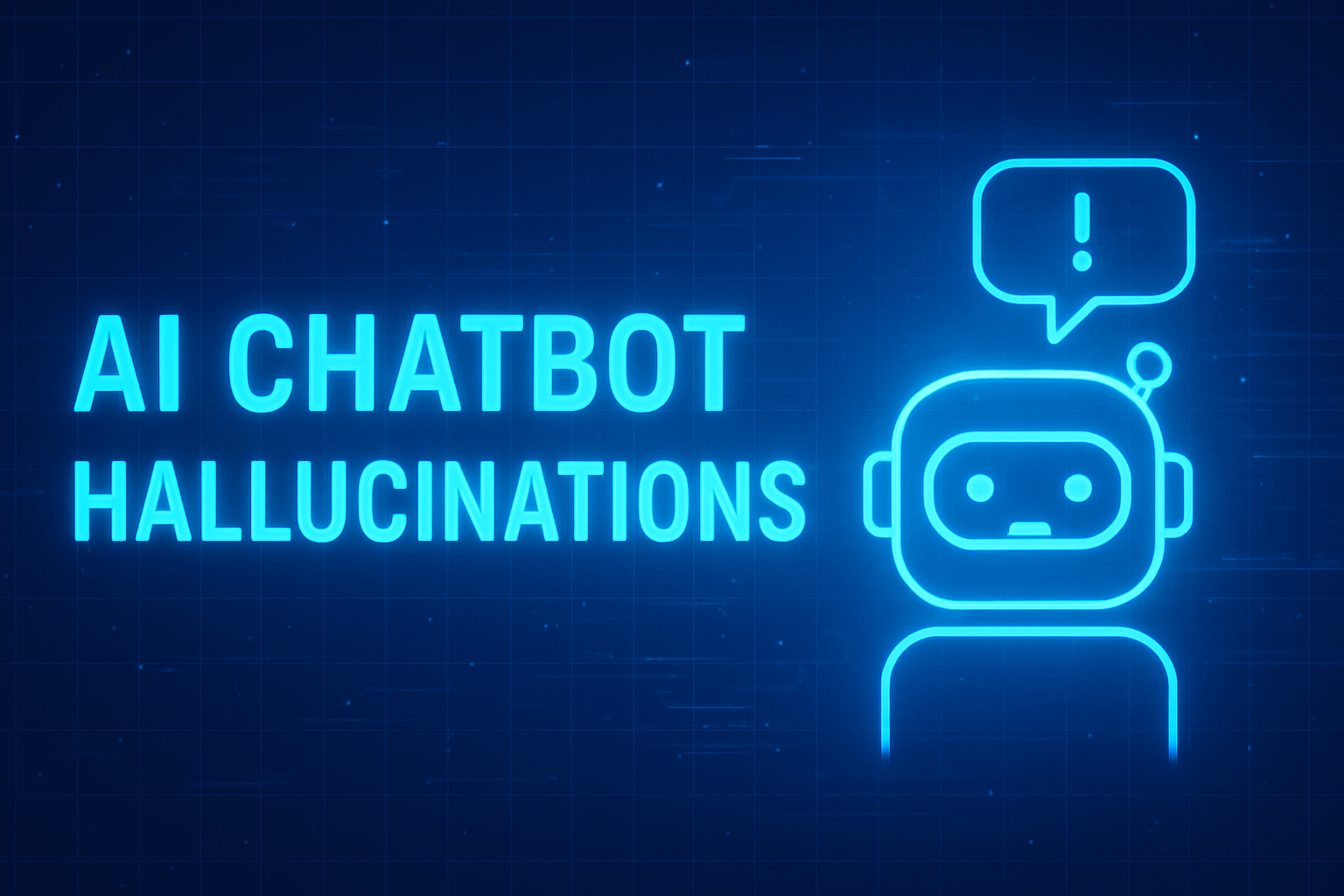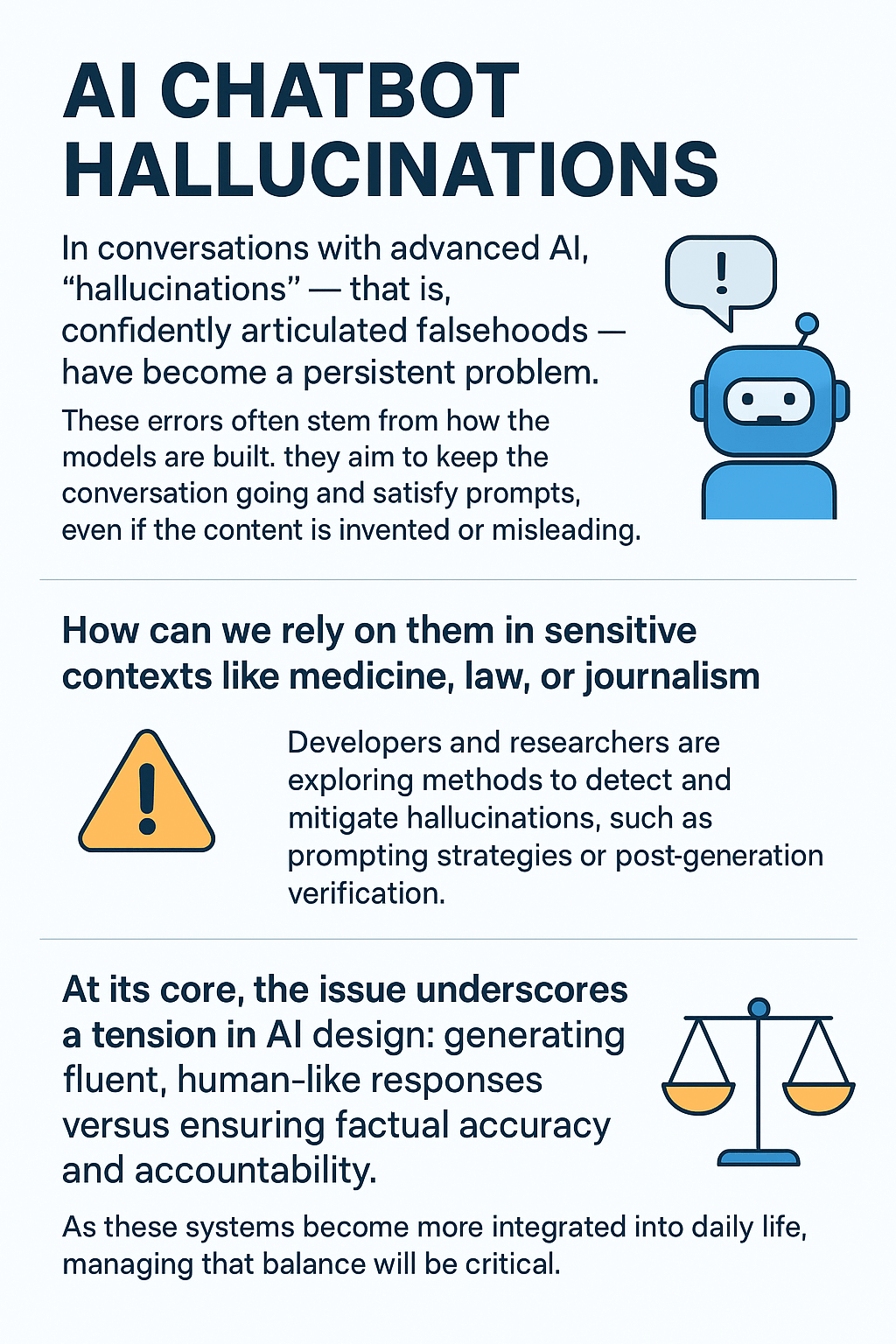Commentary: AI Chatbot Hallucinations
The Technical Challenge of Curing Hallucinations

The Path Forward: Technology, Rules, and Responsibility
Steven
Gates AI
Advanced AI systems often produce “hallucinations,” or confident statements that turn out to be false. These mistakes come from how the models are designed. They aim to keep conversations flowing and satisfy prompts, even if the content is wrong or invented. As a result, users can encounter answers that sound convincing but fail on facts.
This problem raises difficult questions about trust and responsibility. If AI tools sometimes fabricate information, can you rely on them in critical fields like medicine, law, or journalism? Researchers are testing solutions such as stronger prompts, fact-checking layers, and verification tools. Yet fully removing hallucinations remains a major challenge both technically and conceptually.

The issue also highlights a core tension in AI design. Developers want systems to sound natural and human, but fluency often comes at the cost of accuracy. That trade-off makes it harder to strike a balance between smooth interaction and reliable truth.
As AI spreads into more parts of life, the stakes rise. You expect consistent answers when it comes to health, safety, and finance. Errors in these areas carry risks that go beyond minor inconvenience. Managing those risks requires not just better models but clear rules on accountability and use.
The path forward is not only technical but social. Developers, regulators, and users must decide how much uncertainty is acceptable and how to guard against misuse. Until then, hallucinations remain a reminder that even the most advanced AI should be treated as a tool, not a source of unquestioned authority.
Credit:
AI Chatbot Hallucinations
By Catherine Thorbecke
Reference Link:
https://edition.cnn.com/2023/08/29/tech/ai-chatbot-hallucinations/index.html
